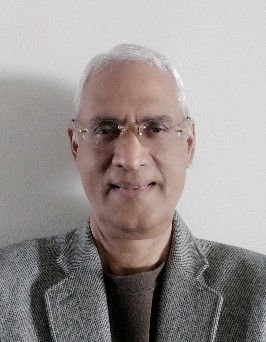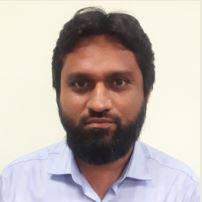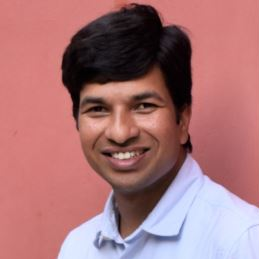Recent Advances in the Field of Inorganic and Solid-State Chemistry: A Themed Issue in Honor of Professor Jagadese J. Vittal’s Retirement
A special issue of Molecules (ISSN 1420-3049). This special issue belongs to the section "Inorganic Chemistry".
Deadline for manuscript submissions: closed (30 November 2023) | Viewed by 615

Special Issue Editors
Interests: MOFs; [2+2] cycloaddition; photosalient crystals; gas adsorption; electrical conductivity; sensing
Interests: coordination polymer; cocrystal; mechanochemistry; solid state reactivity; fluorescence
Interests: MOFs; photoreaction; [2+2] cycloaddition; multiphoton absorption; NLO properties; optical sensors
Special Issues, Collections and Topics in MDPI journals
Special Issue Information
Dear Colleagues,
Inorganic chemistry and solid-state chemistry have vital applications in various fields, both for daily life needs and everyday devices. These applications have been made possible by the significant advancements in the last couple of decades in almost every aspect of sensors, pharmaceutical materials, semiconductors, energy and biology/medicinal applications. Solid-state chemistry and solid-state materials have received great interest mainly driven by the practicality of their applications compared to regular solution procedures, as they require no or minimal usage of solvents and green synthetic protocols. In addition, these solid-state materials are important due to their absence of mostly harmful/toxic solvents. This Special Issue will present publications exploring inorganic chemistry and solid-state materials, including both organic systems and hybrid materials, including coordination polymers and MOFs.
Organic systems and organic complexes (also known as cocrystals) are known to have applications ranging from optics to actuators to sensors and are driven by components of the system along with the presence of weak non-covalent interactions. In the case of organic optical materials, these constitute the presence of either chromophores or charge transfer systems, which are helpful for optical features. Similarly, these non-covalent interactions have been successfully used for the green synthesis of various reactions/ transformations and various molecules in quantitative yields that are difficult to achieve using solution phase procedures alone.
Inorganic and hybrid materials have also been known to have different applications driven by the combined effects of inorganic components, as well as organic components. Metal–organic systems are also known to produce materials with applications in sorption, catalysis, drug delivery, optical properties and actuators.
Prof. Jagadese J. Vittal has contributed immensely to the above fields over the last four decades.

Professor J.J. Vittal
This Special Issue, "Recent Advances in the Field of Inorganic and Solid-State Chemistry”, in the journal Molecules is a themed issue dedicated to honour Professor Jagadese J. Vittal, Emeritus Professor, Department of Chemistry, the National University of Singapore (NUS), on his retirement and for his dedicated service to NUS as well as to the solid-state chemistry, inorganic chemistry, and materials science fields.
Professor Vittal was born in a small village near Thirukkattuppalli in Tamil Nadu, India, in 1956. He attended a local school for the primary education and walked about 8 km for high school education at Thirukkattuppalli. He further studied a pre-university course and BSc in Chemistry at the Pushpam College Poondi near his village in Tamil Nadu. He then continued his MSc in Chemistry at Madura College, Madurai, Tamil Nadu, in 1975‒77. He worked as a lecturer for one academic year at his first alma mater before joining for his PhD at the Indian Institute of Science (IISc), Bangalore, in 1978. He worked on solid-state chemistry, specializing in various aspects of hydrazine chemistry under the guidance of Prof. K.C. Patil and Prof. C.C. Patel. After obtaining his PhD degree in 1982, he joined the lab of Prof. Phil Dean at the University of Western Ontario (UWO), London, Canada, as a postdoctoral fellow and research associate. He was working on multi-nuclear NMR studies of thiolate metal complexes as bioinorganic models with unusual nuclei at that time, such as Se-77, Cd-111 & 113, Hg-199, Ag-107 & 109, Te-123, and Sn-117 & 119. While working, he learned X-ray crystallography from Prof. Nick Payne and started focusing his interest on solid-state structural science. He returned to India and worked as a Senior Research Fellow at the Propellant Research Laboratory, Department of Aerospace Engineering, IISc, focusing on the hypergolic ignition of liquid N2O4 with various organic solids before returning to UWO as the Manager of the X-ray Crystallography lab. During his time as the service crystallographer of the department, JJ spent his spare time working on the chemistry of thiocarboxylates and published papers with Prof. Phil Dean.
In 1997, Professor Vittal accepted a faculty position at the National University of Singapore, where he created a new X-ray diffraction lab with a new Siemens SMART diffractometer with a CCD detector, which was installed first in Asia. He continued to provide his expertise in X-ray crystallography to the department and collaborate with outside faculty members on single crystal crystallography while starting his own research group. After a few years, he started focusing on his own research interests.
Professor Vittal initially worked on the chemistry of thiolates, thiocarboxylates, and selenocarboxylates. He then used the metal complexes of these chalcogen-containing compounds as single-source precursors to produce metal chalcogenides as powders, thin films, and nanocrystals. He created a wide range of such materials including ZnS, ZnSe, CdS, CdSe, Cu2S, Ag2S, Ag2Te, Bi2S3, PbS, PbSe, In2S3, La2S3, and M(I)M(III)E2 (M(I) = Na, K, Cu and Ag; M(III) = Ga, In; E = S & Se). He then succeeded in synthesizing the battery material LiMO2 (M = Co & Ni) from the metal coordination compounds as single-molecular precursors and became interested in creating other anode and cathode materials. He not only improved the efficiency of the existing cathode and anode materials but also created new cathode materials. His research interests also encompass the chemistry of water clusters, Catecholase activity in inorganic model compounds, metal complexes of reduced Schiff base ligands, and fluorescent coordination polymeric gels and nanofibers. As a solid-state chemist, he was naturally interested in structural chemistry, crystal engineering, single-crystal-to-single-crystal (SCSC) reactions, solid-state structural transformations, coordination polymers, and metal‒organic frameworks structures. Until 2008, he was collecting the single crystal crystallographic data by himself.
He entered the field of solid-state photochemistry by accident. After one of his honours students completed her studies and left the laboratory, he himself performed experiments on the first single-crystal-to-single-crystal (SCSC) photochemical [2+2] cycloaddition reaction of a coordination polymer. Since then, he focused and sustained his interest in this field until his retirement. Later, his group discovered the dynamic behavior of single crystals during [2+2] cycloaddition reactions.
The year he moved to Singapore, he initiated the crystal growing challenge among high school, junior college, and polytechnic students, which was probably first in this region and in Asia. This art of crystal growing not only created enormous interest among the young minds but also attracted them to pursue science as their career. This has been the most popular competition for the past 25 years in Singapore. Since 2014, Professor Vittal has served as a committee member of the World Crystal Growing Challenge. He has delivered a popular lecture on ‘How to be a successful researcher’ in Singapore, India, Canada, China, and S. Korea for the past several years. This is to motivate students to research and cope with failure, stress, timelines, and pressure.
About 25 years ago, single crystal diffractometers were not accessible as they are now for researchers in developing countries. When Professor Vittal moved to Singapore in 1997, he generously helped several faculty members in Asia to excel in their research by providing crystallographic data and his expertise in X-ray crystallography.
Professor Vittal organized several conferences including the 16th Conference of the Asian Crystallographic Association (AsCA2019) in December 2019. He also introduced two awards, namely, the SNIC-AsCA2019 Singapore Award for Solid State Chemistry & Materials and the SNIC-AsCA2019 Distinguished Women Chemist Award from the profit made from the AsCA2019.
Professor Vittal was often called upon for leadership and service roles in his department, faculty, university, and outside and on numerous review panels in and outside of Singapore. Professor Vittal is a recipient of the Chemical Research Society of India (CRSI) Medal (2020); Indian Chem. Soc. G.V. Bakore Memorial Award (2019); Outstanding Chemist Award, NUS (2014); CRISP Award, Faculty of Sci., NUS (2013‒14); Outstanding Researcher Award, NUS (2011); Erudite Scholar-in-Residence, Kerala State of High Education, India (2011); Finalist, President's Science Award, Singapore (2009); Best Scientist Award Faculty of Science, NUS (2007); ISCAS Bronze Medal, India (2001); Royal Society of Chemistry Journal Grant Award (2002 and 2009); DAAD Visiting Fellowship (2002); and is highlighted in the Angewandte Author Profile (2014), among other honours.
Professor Vittal is also a Life Fellow of the Indian Chem. Soc. (2020‒); Fellow of the Internat’l. Assoc. Adv. Mater. (2022‒): Fellow of the Royal Society of Chemistry (2014‒); Life Fellow of the Singapore National Institute of Chemistry (1998‒); Life member of the Indian Thermal Anal. Soc. (1979‒); and Life member of the Indian Association of Solid-State Chemists and Allied Scientists (2001‒). He was also an Editorial Board Member of Scientific Reports (2016‒2020) and Crystal Growth & Design, (2012‒); Associate Editor, Journal of Synthesis and Reactivity in Inorganic, Metal-Organic and Nano-Metal Compounds (2006‒2014), Member, Editorial Board, COSMOS, (2010‒2013); and Member of the International Editorial Board of Main Group Metal Chemistry (2003‒2014), among others.
Professor Vittal has published over 525 original papers, reviews, highlights, and book chapters that have received >25,500 cites and an h-index of 80. Several papers have been highlighted and have decorated the cover pages, selected as hot papers, and topmost accessed by web. According to the recent C-score (composite indicator for career-long impact), Professor Vittal ranks 83 out of 57598 researchers in the field of Inorganic & Nuclear Chemistry and stands top in the Department of Chemistry at NUS.
Professor Vittal also co-authored Crystal Engineering – A Textbook with G.R. Desiraju and A. Ramanan, World Scientific (2011) and co-edited Frontiers in Crystal Engineering with E.R.T. Tiekink, Wiley (2006) and Organic Crystal Engineering -Frontiers in Crystal Engineering with E.R.T. Tiekink and M.J. Zaworotko, Wiley (2010). He has also co-edited Special Issues for J. Mol. Structure (2006), CrystEngComm (2014), Crystal Growth & Design (2015), and ChemPlusChem (2016). Professor Vittal supervised 25 PhD students, 15 MSc students, and about 50 undergraduates for final year research projects, numerous junior college, and high school students in their research activities.
On the personal side, Professor Vittal is a devoted husband to his wife Bavani and has two children; they are all settled in Toronto. He also enjoys spending time with his granddaughter who is 20 months old, watching cricket matches, and listening to Indian music. He is also keeping himself busy in delivering courses on Crystal Engineering in China and India, writing papers and reviews, and helping researchers in China in his spare time.
Dr. Mohammad Hedayetullah Mir
Dr. Goutam Kumar Kole
Dr. Raghavender Medishetty
Guest Editors
Manuscript Submission Information
Manuscripts should be submitted online at www.mdpi.com by registering and logging in to this website. Once you are registered, click here to go to the submission form. Manuscripts can be submitted until the deadline. All submissions that pass pre-check are peer-reviewed. Accepted papers will be published continuously in the journal (as soon as accepted) and will be listed together on the special issue website. Research articles, review articles as well as short communications are invited. For planned papers, a title and short abstract (about 100 words) can be sent to the Editorial Office for announcement on this website.
Submitted manuscripts should not have been published previously, nor be under consideration for publication elsewhere (except conference proceedings papers). All manuscripts are thoroughly refereed through a single-blind peer-review process. A guide for authors and other relevant information for submission of manuscripts is available on the Instructions for Authors page. Molecules is an international peer-reviewed open access semimonthly journal published by MDPI.
Please visit the Instructions for Authors page before submitting a manuscript. The Article Processing Charge (APC) for publication in this open access journal is 2700 CHF (Swiss Francs). Submitted papers should be well formatted and use good English. Authors may use MDPI's English editing service prior to publication or during author revisions.








